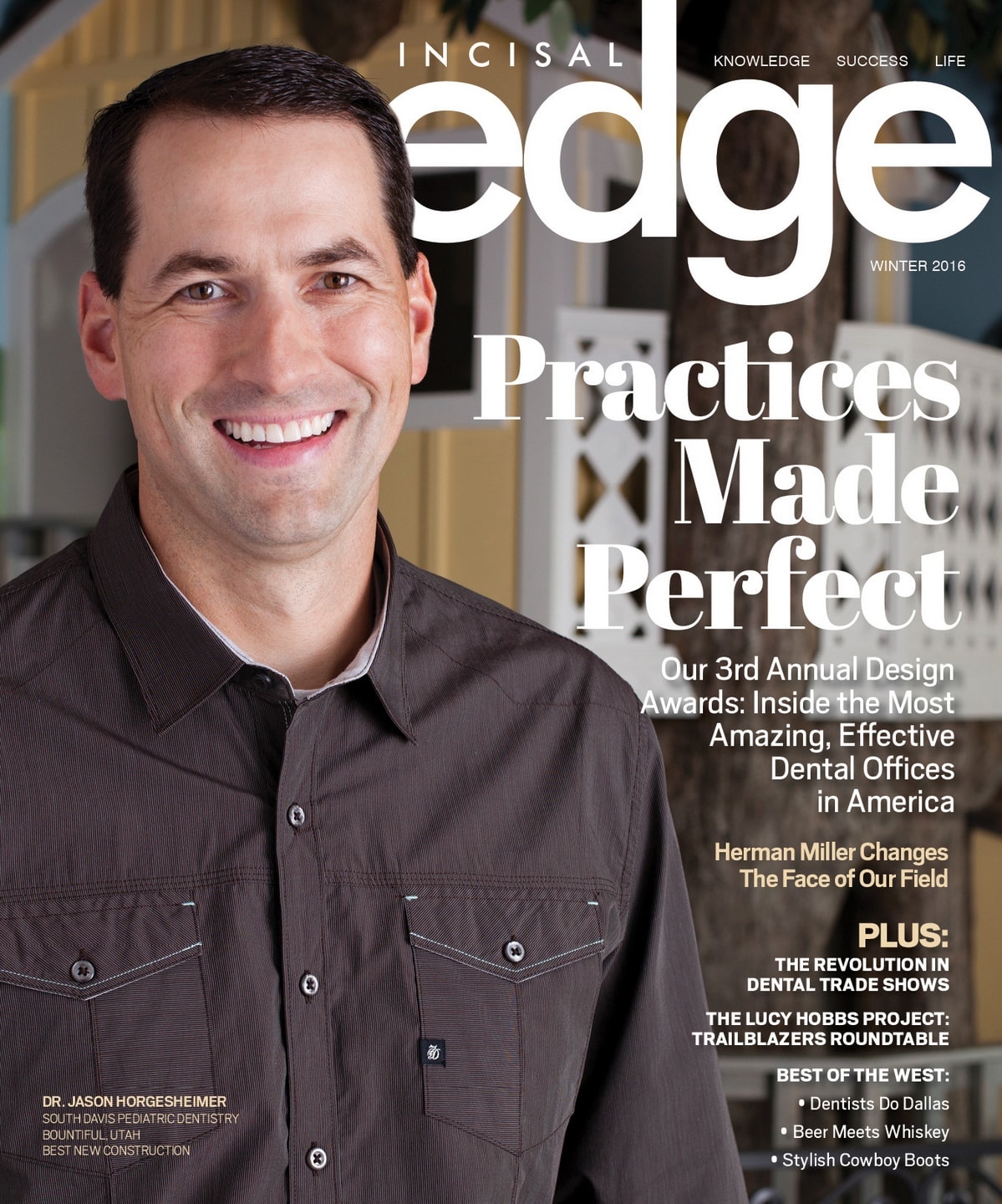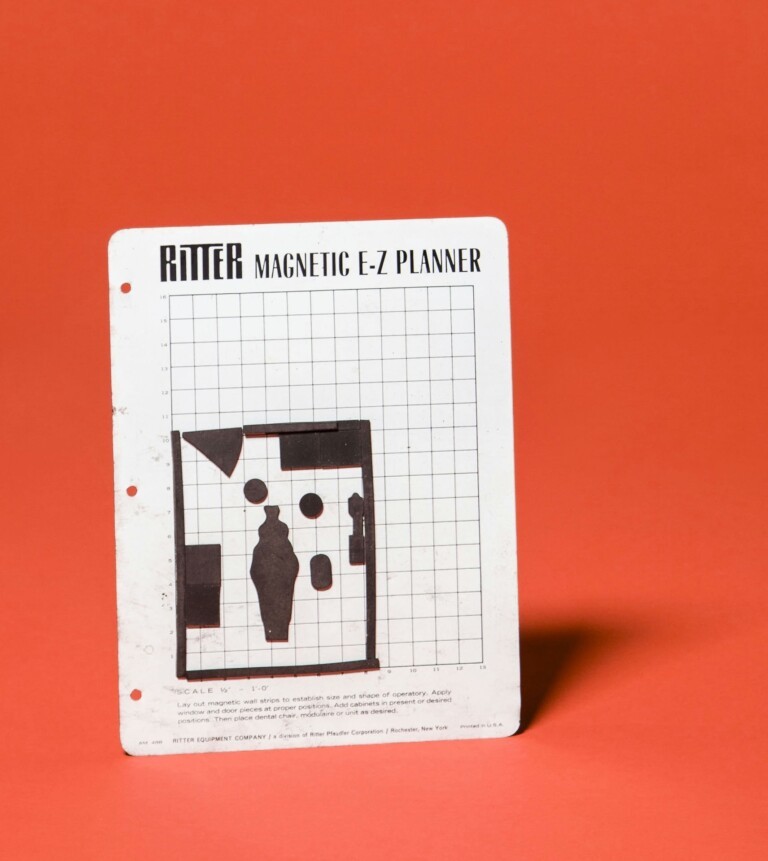As dentistry enters a golden age of innovation and technological wizardry, figuring out the equipment underlying it all can feel like walking into a Best Buy before the holidays. You need to sift through dozens of brands and hundreds of models, and after you’ve decided on your equipment, you then need to figure out how to deploy it in your operatory – an exercise that requires thought and planning more akin to a military exercise. That’s why most dental distributors, in addition to regular territory representatives, now offer equipment specialists and layout and design experts.
It wasn’t always so. Back in the postwar years, the territory rep did it all. He (it was almost assuredly a man back then) sold the equipment, then laid it out in the operatory – – and the whole procedure took less than a half-hour. What you see on this page was his handy-dandy helper in the process: Ritter’s “Magnetic E-Z Planner,” which was little more than a sheet of tin graph paper and some magnetic cut-outs that stuck to it.
Here’s how the process would work: The sales rep measured the room, and would then adhere magnetic walls on the graph paper to approximate its size, at scale. From there, miniature magnets representing the unit, chair and x-ray would fall into place. The rep and the doctor could move them around, as needed – a quick and easy process that resulted in every dental office and every dental operatory looking pretty much the same.
That’s what makes this design-focused issue of Incisal Edge so amazing.  Just look at the award-winning offices and operatories, each as different and as unique as the dentists themselves. Dental design, it turns out, can be as beautiful and efficient as anything in architecture, and when done well, it’s a tremendously positive way to advertise a practice. No magnets required.
Just look at the award-winning offices and operatories, each as different and as unique as the dentists themselves. Dental design, it turns out, can be as beautiful and efficient as anything in architecture, and when done well, it’s a tremendously positive way to advertise a practice. No magnets required.


